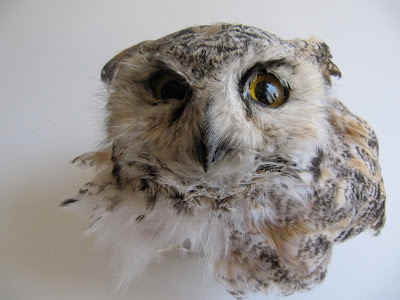 This tick had in many ways an ideal life. She was one of the lucky ones clinging to a blade of grass that managed to latch on to a passing mammal. Secreted in the thick fur of a terrier, she gorged on blood. She was probably a few millimetres across when she began feeding. But when she was discovered by the dog's owner she had swollen to nearly an inch, engorged with the blood that she needed in order to give birth to thousands of live young.
This tick had in many ways an ideal life. She was one of the lucky ones clinging to a blade of grass that managed to latch on to a passing mammal. Secreted in the thick fur of a terrier, she gorged on blood. She was probably a few millimetres across when she began feeding. But when she was discovered by the dog's owner she had swollen to nearly an inch, engorged with the blood that she needed in order to give birth to thousands of live young.So far, so good, Tick. But this tick was also the catalyst for one of the best practical jokes I've ever seen. My entomologist pal Wes Hunting worked in the Strickland Museum of Entomology while writing his Masters Thesis. Sometimes people would drop into the museum with weird bugs that they were distraught about, seeking information and reassurance from the experts. This tick was brought in by a worried woman who had found it on her pooch. Wes assured the lady that everything was fine, that her dog had been playing host to a blood-sucking parasite for a while and no, the tick hadn't yet hatched thousands of live young in her home. No big deal.
So Wes took the tick home with him that night. He showed it to our roommate Chris and told him in worried tones that he'd found it in his bedroom. Wes suggested that maybe Chris should check his bedroom too, y'know, just in case. When Chris found a blood-swollen tick beneath his pillow he lost control of himself in revulsion and terror. He made high strangled sounds in his throat. He started feeling phantom biting under his clothes. Wes did his best to calm him down, of course, and took the offending insect and 'flushed it down the toilet.' Chris had already starting tearing apart his bedroom, looking furtively in nooks, baring his teeth at shadows. Wes, ever the helpful friend, helped look for any other ticks. And, wouldn't you know it, he found one between Chris' sheets. And another, beneath his bed. This is about when I came home. Chris was wild-eyed and sweaty, carrying all of his belongings to the front lawn, throwing them in heaps, yelling curses. He blamed everyone for his disgusting misfortune; the landlord, our roommate John, our friend's dog, God, the Devil and even, for a brief moment, himself. It was only a case of beer later that he calmed down enough to learn who he should have been blaming all along.
The tick survived the entire ordeal with less damage than Chris did. She even lived long enough to birth a few thousand progeny. Then her and the little ones were dumped into a jar of alcohol so that they could one day decorate my apartment.
Word to the wise: Entomologists are devious and will play upon your fears for sport.




